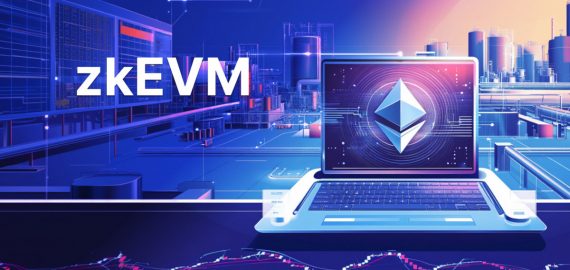Blockchain Gaming Market Overview 2023: Trends, Leaders, Predictions


In Brief
Blockchain technology has successfully merged with traditional gaming, leading to play-to-earn (P2E) and web-3 games.
In-game asset ownership is a driving force, allowing players to manage their virtual possessions without limitations or middlemen.
Decentralized games and assets are safer than traditional games, promoting trust and engagement.
Mobile gaming is gaining traction, with iOS and Android blockchain games like League of Kingdoms, Skyweaver, Splinterlands, Realm, Meta Ape, Crazy Defense Heroes, and Dragonary gaining popularity.
Collectible games are also expected to experience significant growth due to in-game asset ownership and the increasing disposable income of millennials.
However, regulatory uncertainty and lack of consensus on governing NFTs and virtual assets are challenges in the gaming industry.
With blockchain technology penetrating different realms of our life, no surprise it successfully merged with the traditional gaming, giving birth to play-to-earn (P2E) and web-3 games that provide users with unique opportunities. What to expect from this newly-emerged niche in the near and distant future? In this article, Alexander Skorik, Bluelight.inc CMO, casts the light on blockchain gaming trends and loud names that are shaping the industry right now and in the long-term perspective.

Blockchain Gaming Trends 2023
In-game asset ownership is still a driving force
If there’s one key difference between traditional and blockchain games it is asset ownership. Players may fully own and manage their in-game artifacts (characters, weapons, skins, lands, etc.) thanks to decentralization and NFT technologies. Thus, unlike in conventional centralized games, users may freely move, trade, and even sell their virtual possessions without any limitations or middlemen.
Because they are held on the extremely secure blockchain networks, decentralized games and assets are safer than traditional games. This helps to avoid fraud and theft – all transactions are documented on a public blockchain network. Users can see exactly where their assets are and how they are being spent, which promotes trust and game engagement, as well. As a result, these motivating reasons are fueling the adoption of blockchain technology in gaming as well as the rising demand for web-3 games.
Mobile gaming is gaining traction
With the mobile gaming audience being the largest one in the world (3.9 bln users), the expansion of the blockchain in the gaming industry has also been fueled by technological developments in smartphones. More people prefer quick and easy mobile games on the go, which calls for the need of making mobile-only or multi-platform blockchain games that would be compatible with several devices. Hence, we witness the rise of iOS and Android blockchain games: League of Kingdoms, Skyweaver, Splinterlands, Realm, Meta Ape, Crazy Defense Heroes, and Dragonary, just to mention a few.
Collectible games are among the favorite genres
Since in-game asset ownership is becoming more and more relevant for players, we may predict that the collectible games category would experience considerable growth. For gamers interested in owning and collecting rare or unique digital goods, this presents a compelling value proposition. Additionally, collectible games emphasize the uniqueness and scarcity of digital goods to increase player engagement and motivate them to invest their time and money. This is accomplished through a variety of gameplay elements, including randomised awards, goods that are only available for a limited time, and rewards for reaching certain milestones or objectives.
Interesting to note, the collectible game market is being driven by an increase in millennials’ disposable income. Millennials adore these games because they spent their former years playing them. With their desire for unique products, NFTs and in-game artefacts seem increasingly appealing. In the following six years, it is anticipated that the market for collectable card games will continue to grow due to the surge in millennial purchasing and the fact that millennials outnumber baby boomers.
Regulators discourage both creators and players
One of the main obstacles to the implementation of blockchain technology in the gaming sector is the lack of regulatory certainty. Since both creators and players are not aware of future legislation or how current regulations might apply to blockchain-based games, the legal and regulatory environment is too unpredictable and challenging to manage.
Additionally, there is still a lack of consensus about how NFTs and virtual assets should be governed. A lot of blockchain-based games employ cryptocurrencies or other digital assets as a medium of trade. Regulations will probably address these challenges as blockchain technology continues to develop and mature.
So far, there is an illicit ban of cryptocurrencies in the majority of countries, with China, Tunisia, Qatar and a few others prohibiting it fully and officially. The USA, meanwhile, is demanding full transparency from projects operating digital assets: SEC threatens major crypto players, which discourages game startups from any attempts to enter the market. In a few years’ perspective, the status of cryptocurrencies and NFTs (which are the major driving force behind blockchain games’ economies) should become clear, which will either trigger or cease development of web-3 games in certain countries.
Ethereum is losing positions
At first glance, Ethereum is still in a dominant position among game blockchains because its smart contract allows for creation of original gaming mechanisms, the storage of in-game assets on the blockchain, and the development of decentralised marketplaces for exchange of these assets. However, the Merge (shift to a Proof-of-Stake consensus) hasn’s solved the issue of Ether’s hefty fees, and newly emerging blockchains with agile smart contracts and minimal transaction commissions are becoming a more lucrative alternative.
In 2022, Wax was among the most popular gaming blockchains with more than 350,000 unique active wallets. Guess what – it’s still among top game blockchains in 2023. Aside from Wax, other leading gaming blockchains by the number of UAW in 2022 were: Hive, BNB Chain, Polygon, Ronin, EOS, Dep, Flow, and IMX.
By the way, here is the proof that WAX is still a top gaming blockchain by the number of users in 2023:
Although the number of active wallets does not always reflect the actual number of players (because some games can be accessed without connecting a crypto wallet), we can see distinctive leaders: Alien Worlds, Farmers World, Splinterlands, and SuperWalk – none of them are hosted on Ethereum.
P2E concept turned out to be delusive
Overwhelming success of such games as Axie Infinity and STEPN and their financial blunder have shown that the Play-to-Earn game economy model is not viable in the long term. Players seeking fast returns simply sold their crypto holdings without further reinvesting, which led to coin price crash, and left creators and newcomers without funds.
The next thing averting players from P2E games is the necessity to make initial investments (most often, NFT purchases). At the peak of their popularity, Axie and STEPN required newcomers to spend a few hundreds of bucks to enter the game – a prohibitive luxury even for an average crypto user.
This is why the community is shifting its focus to free-to-play blockchain games like Bluelight.inc.
Numbers Say It Louder
In 2022, the blockchain gaming industry was worth $4.6 bln. During the first quarter of 2023, there was a noticeable positive trend in the blockchain gaming industry as it experienced a bullish growth of 45.60%. It means that despite a long-lasting crypto winter, blockchain games continue evolving and attracting users and investments.
According to the study by MarketsAndMarkets, blockchain gaming industry capitalization is expected to exceed $65 bln by 2027, while Polaris Market Research suggests that the market size will reach $1,020.02 bln by 2032.
These numbers don’t seem insane when you consider potential investments that may flow with release of highly anticipated AAA blockchain games, shift from the P2E paradigm to more viable economies, and of course, the next bull run in the crypto market.
Decentralized economy and asset ownership are key drivers for the growth of the blockchain gaming industry. Yet, the first wave of P2E games turned out to be rather an experiment than an ultimate success. New generation blockchain games that hit the market in 2023-2025 are expected to deliver much more joyful user experience coupled with viable tokenomics. The balance between engaging gameplay and fair rewards will be imperative for games that want to maintain and grow their audience in the long run.
The major obstacles faced by developers are technological challenges (which are being addressed by newly-emerging blockchains like WAX and Polygon) and legal regulations (which makes blockchain games illegal in certain countries, cutting off large parts of the global crypto community). I expect these issues to be solved within the following years because the crypto industry is becoming too big to ignore.
FAQs
Web-3 games differ from traditional video games through their integration of blockchain technology, which enables secure ownership, verifiable scarcity, and player-driven economies. In blockchain games, in-game assets are tokenized as NFTs, allowing players to truly own and trade digital items. This decentralization reduces the control of centralized game developers, empowering players with independence and control. Additionally, blockchain’s transparency and immutability enhance trust in item ownership and transactions (including game results). However, blockchain games may face scalability and usability challenges compared to traditional games, which impacts their mainstream adoption and gameplay experience.
This is a game with an in-built blockchain economy, meaning it has one or several native tokens that serve to buy and sell assets and reward players. Play-to-Earn games are intended to pay players for completed tasks and certain activities. It’s supposed that these tokens can be used to make purchases within the game (or its official marketplace), withdrawn or exchanged for other cryptocurrencies.
As a rule, many in-game assets (characters, weapons, wearables, furniture, etc.) can be turned into NFTs. It allows players to earn more because they can sell leveled up characters or rare and unique items at a pretty high rate. NFTs allow leveraging unique items and serve as a proof of ownership. Hence, players can rest assured that their virtual possessions won’t be stolen or faked.
These are the same countries that prohibit Bitcoin and cryptocurrencies. This list includes China, Qatar, Egypt, Nigeria, Bolivia, Bangladesh, Iran, and South Korea. Since the US keeps implementing strict measures towards transparency and accountability for all projects that operate digital assets, game developers do not serve the audience in this country, too. When it comes to gambling, slots and card games like Poker are prohibited in countries that ban online casinos.
Ethereum has long been the best choice for building any kind of dApp, including blockchain games, because it is flexible, secure, and can work with other apps. However, there are a multitude of other blockchains that are being more commonly used for hosting web-3 games. WAX and Polygon are among the most popular ones because they provide enough scalability and moderate fees.
Read more related topics:
Disclaimer
In line with the Trust Project guidelines, please note that the information provided on this page is not intended to be and should not be interpreted as legal, tax, investment, financial, or any other form of advice. It is important to only invest what you can afford to lose and to seek independent financial advice if you have any doubts. For further information, we suggest referring to the terms and conditions as well as the help and support pages provided by the issuer or advertiser. MetaversePost is committed to accurate, unbiased reporting, but market conditions are subject to change without notice.
About The Author
Alexander Skorik is a seasoned CMO at Bluelight.inc and a respected contributor to MPost. With over 12 years of strategic marketing expertise across product and agency domains, Alexander's proficiency shines. His impactful contributions encompass guiding products from inception to industry prominence during his 2-year tenure at a game development firm. Possessing a robust skill set, he excels in product management, strategic marketing, audience segmentation, integrated communications, market research, and KPI-driven effectiveness assessment. His wide-ranging experience covers digital performance, influencer collaborations, social media, television, out-of-home advertising, and beyond.
More articles

Alexander Skorik is a seasoned CMO at Bluelight.inc and a respected contributor to MPost. With over 12 years of strategic marketing expertise across product and agency domains, Alexander's proficiency shines. His impactful contributions encompass guiding products from inception to industry prominence during his 2-year tenure at a game development firm. Possessing a robust skill set, he excels in product management, strategic marketing, audience segmentation, integrated communications, market research, and KPI-driven effectiveness assessment. His wide-ranging experience covers digital performance, influencer collaborations, social media, television, out-of-home advertising, and beyond.

















































